WHEAT:NEWS Radio April 2016 - Vol 7, No. 4
Got feedback or questions? Click my name below to send us an e-mail. You can also use the links at the top of the page to follow us on popular social networking sites and the tabs will take you to our most often visited pages.
Jay Tyler Rocks the Boat
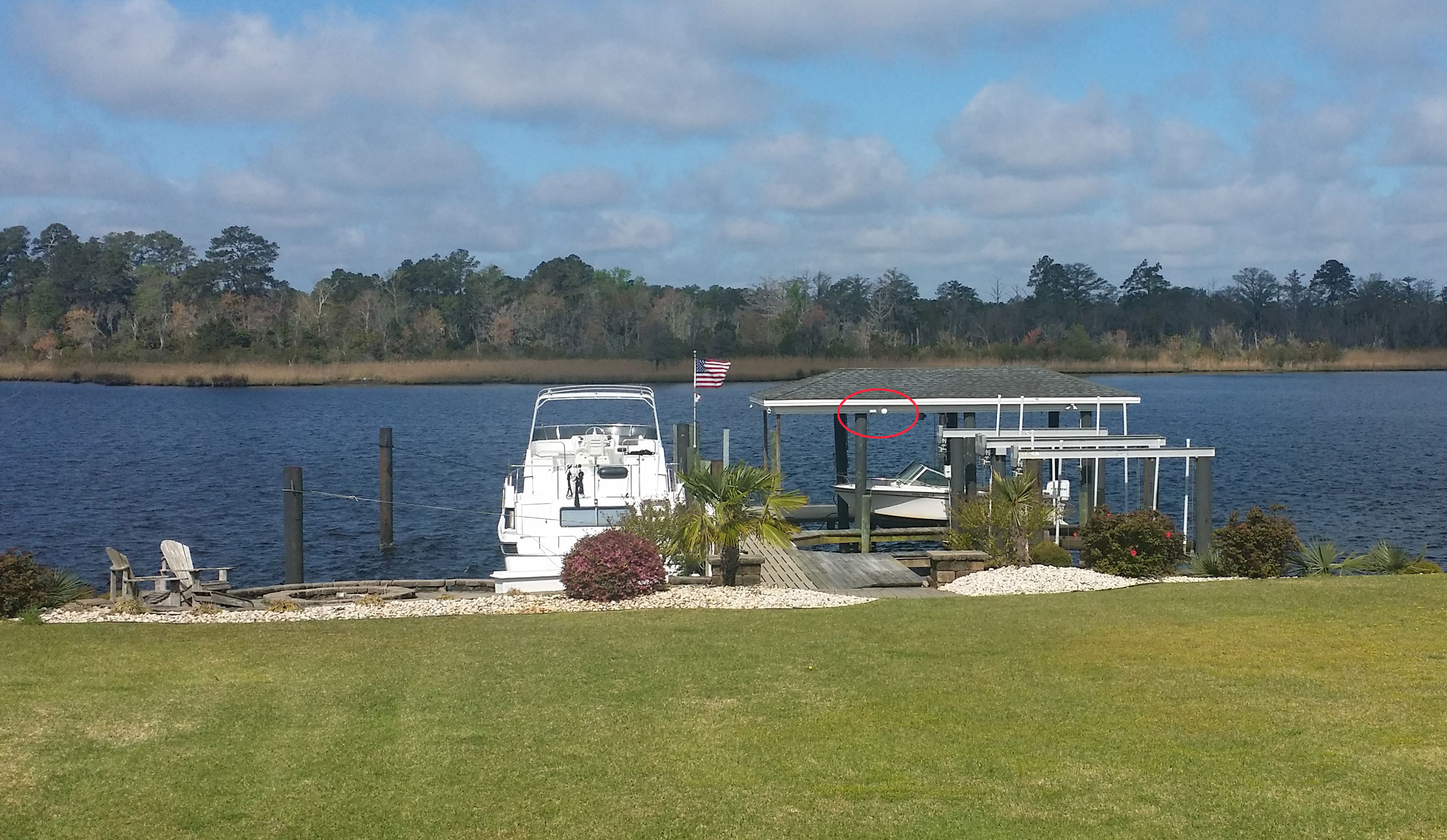
It was probably just a matter of time before someone at Wheatstone combined audio networking with our favorite pastime, boating and listening to the radio. And I suppose most of us could have guessed that of our nine (and counting) avid boaters at Wheatstone, Jay Tyler would be the one to do it.
Who else would ferry music from his house out to his boating dock using WheatNet-IP audio over an unlicensed IP microwave link? (click to enlarge the boat dock photo - antennas are circled in red)
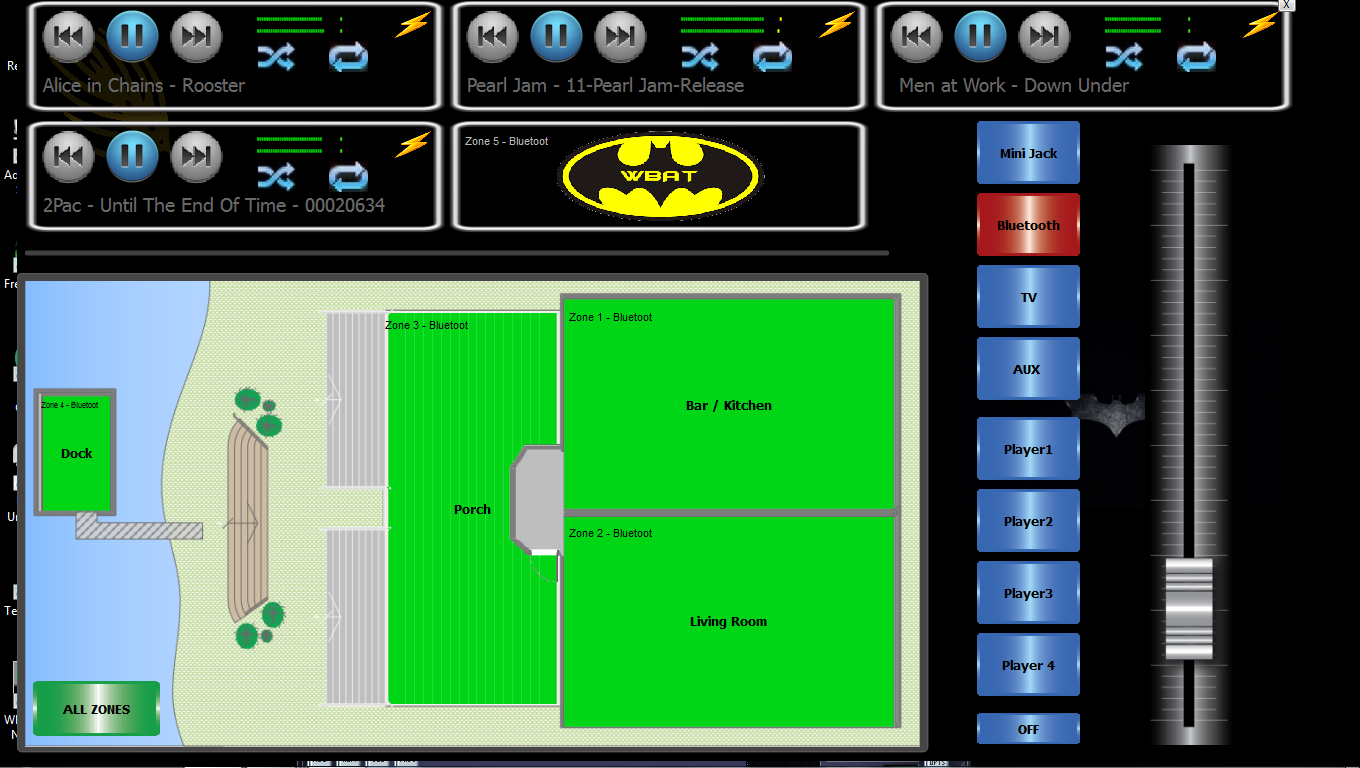
Everyone knows how much Jay likes to network things together. His entire house is wired with WheatNet-IP, in fact. So, of course he extended WheatNet-IP out to the dock, where he moors his cabin cruiser, Sales Call, and his two small bar-hoppers, the Pub Crawl and the Short Bus. (Jay sold his “James Bond” speedboat.) He set up Ubiquiti NanoBridge IP radios and antennas on each end with our new EDGE unit acting as a buffer between the IP microwave link and his home WheatNet-IP network. (The EDGE interfaces between the WheatNet-IP audio network and the IP microwave to provide the necessary delay as a buffer to any latency shifts that come across the link.)
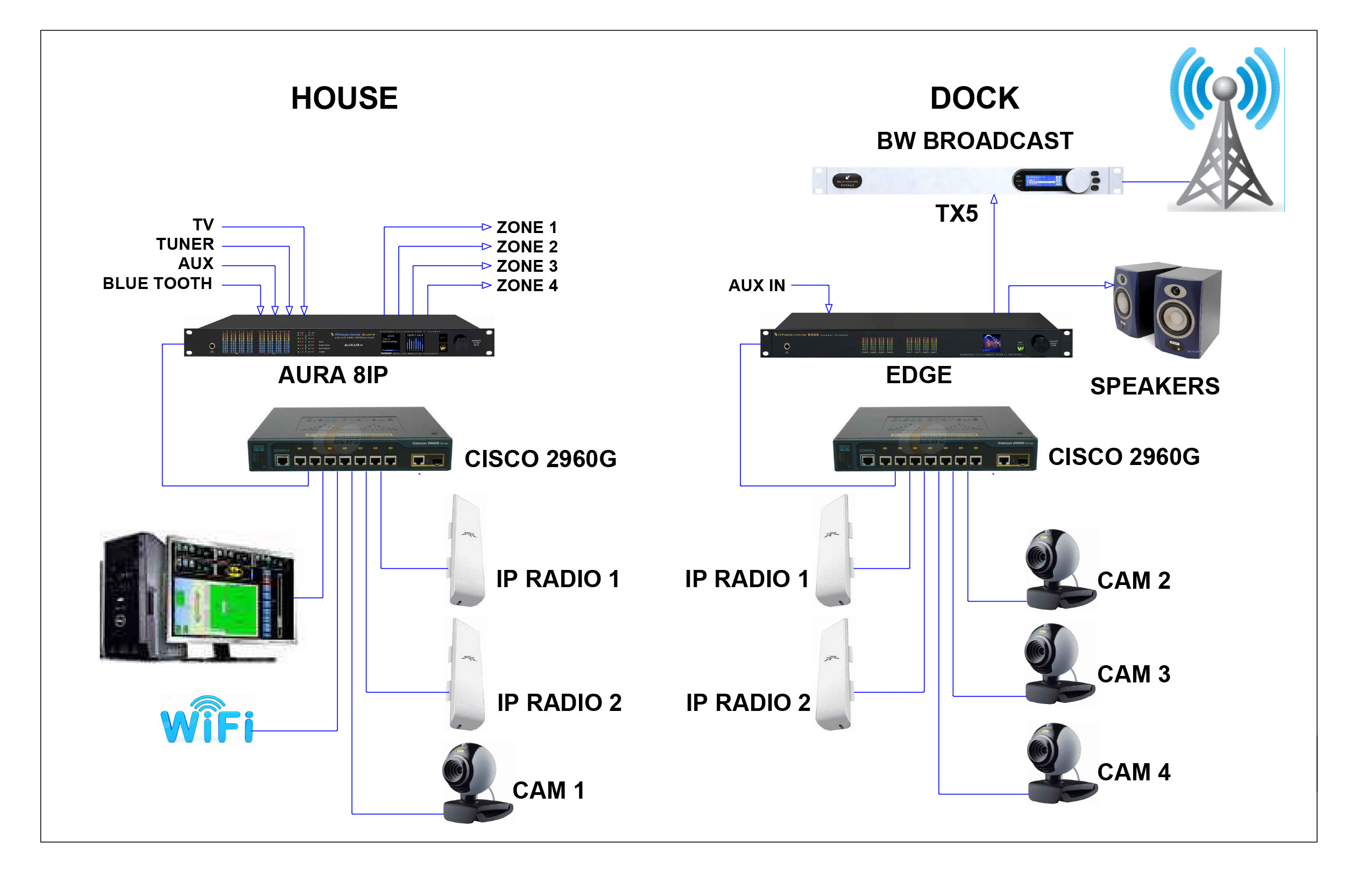
Now, while he’s hanging around on his dock, he can remote in from anywhere to cue up a song or video steam from his home entertainment system. The bi-directional link allows Jay to stream sources from the house to the speakers and the transmitter on the dock lets him stream inputs from the dock though the home.
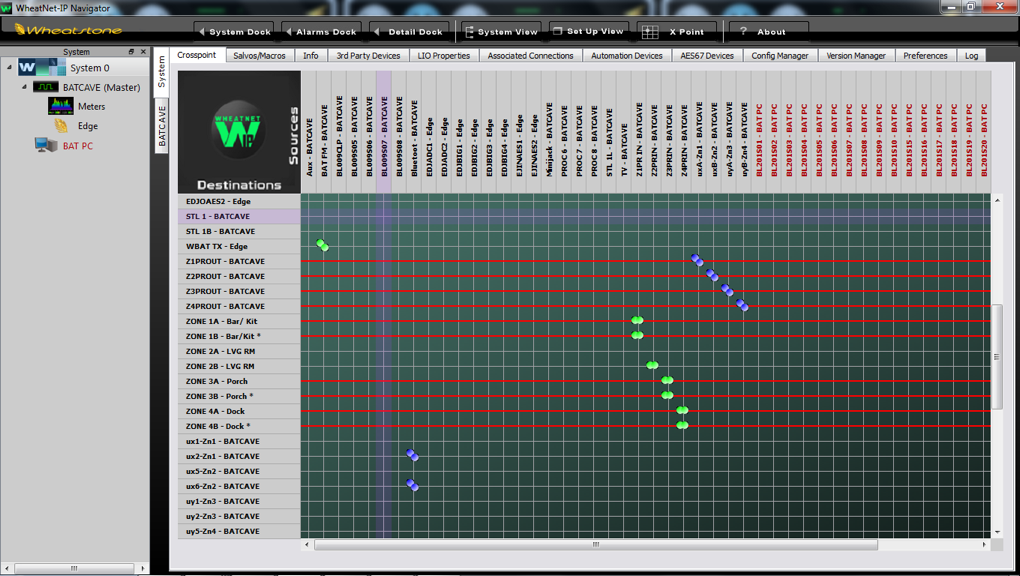
Did we mention that Jay has a boatload of WheatNet-IP audio networking inside his house, all segmented by zones and controlled from a virtual control panel customized by our ScreenBuilder app? He can switch from stereo FM to TV to iTunes by zone, whether he’s in the livingroom, the kitchen, the bar area, on the porch or, now with the IP link, at the dock. Or, he can group all the zones together, like he did recently to stream the Seahawks vs. Panthers game throughout his house. All zones are mapped out on a ScreenBuilder control panel, with “hot-keys” for each linked to virtual mixers built into the WheatNet-IP Aura8-IP BLADE.
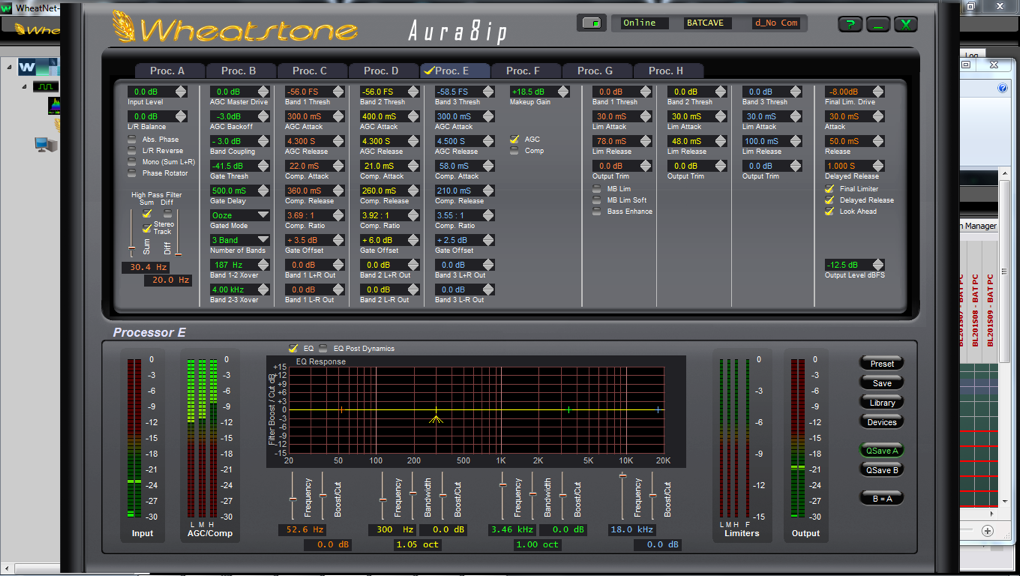
The analog inputs of the Aura8-IP BLADE are connected to his TV tuner, an FM tuner, and Bluetooth aux. He uses the BLADE’s two eight channel utility mixers to group and subgroup streams.
All Jay had to do was arrange widgets for volume control, stream sources and six other hot keys in a drag and drop environment, and link those widgets to the TV tuner, FM tuner and auxiliary inputs and then determine what each widget does using a simple Script Wizard. Actually, it was even easier than that – Chris Penny, our dealer with Agile Broadcast in Australia, wrote a similar script for a sports-related project and was able to apply a version of that script to Jay’s home entertainment system. It was all done remotely, from Chris’ office in Australia.
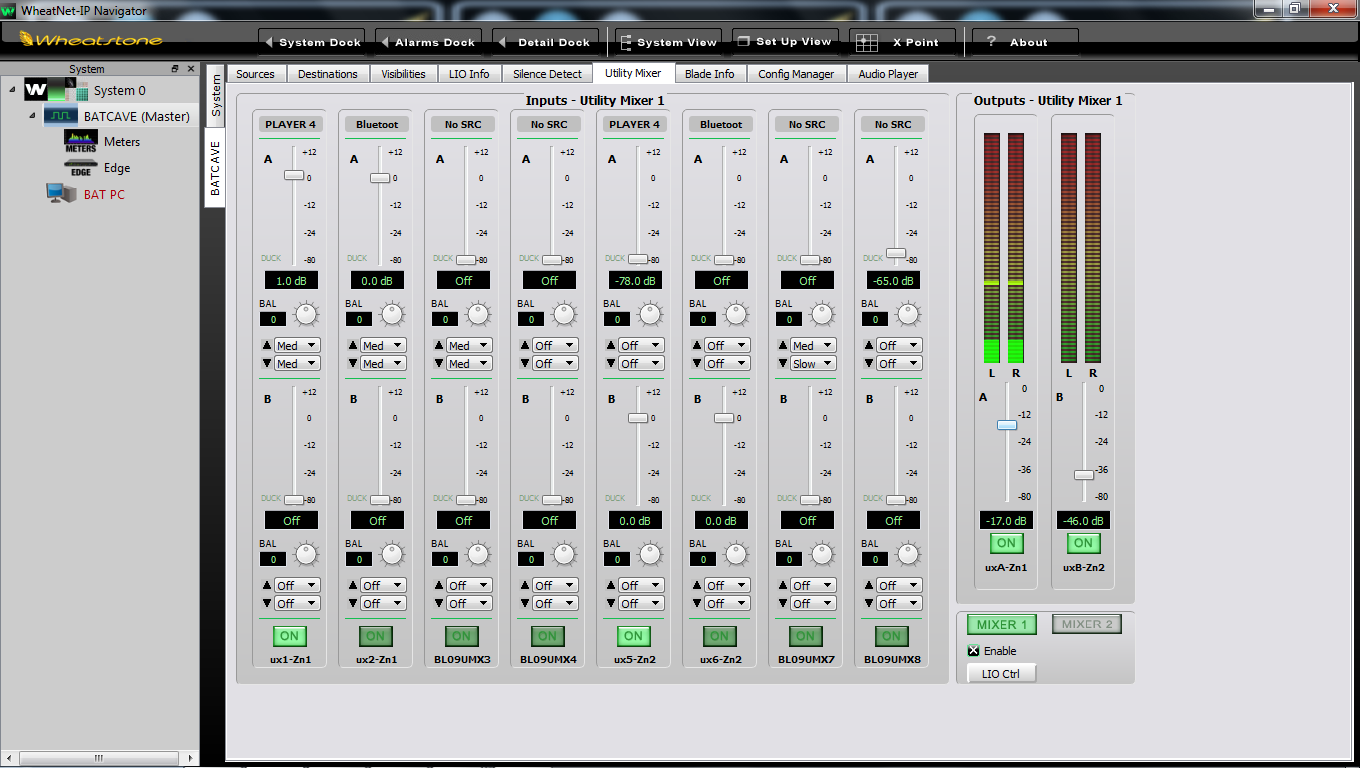
So, with some simple scripting and using the utility mixers inside the WheatNet-IP audio network BLADE, Jay can view a television show in his livingroom, listen to FM music in his bar area or download a podcast from the kitchen, the porch, or from the dock. He can also change volume, set EQ and compress the audio (also included in the Aura8-IP, which is a multimode audio processor) by zone from his tablet or phone or by simply moving a mouse.
The network includes WheatNet-IP NAVIGATOR software and IP Meters app (we have no doubt Jay will find a use for a wall of 64 meters), plus a 24-channel WheatNet-IP audio driver that allows him to stream anything from his PC’s browser, including YouTube and Amazon audio. Integrated into the system are four audio decks with embedded WinAmp, giving him access to 75,000 cuts of linear audio.
His latest addition links all of that over an unlicensed frequency on the 5.8GHz band from his home entertainment system to his boating dock, where he also keeps a TX5 exciter provided by his friends at BW Broadcast. WheatNet-IP hooks into the microwave link directly through RJ-45 connectors for straight IP audio out to the TX5, which occasionally broadcasts Jay’s favor songs out to nearby neighbors. (He calls his station WBAT – what else?)
In case you’re wondering, Wheatstone's home of New Bern, NC is located at the confluence of the Trent and the Neuse rivers, near the North Carolina coast which makes it perfect for boating! Everyone from the president down through production are boat enthusiasts, since it tends to be the preferred method of transportation in the summer.
School of Hard Knocks. Not.
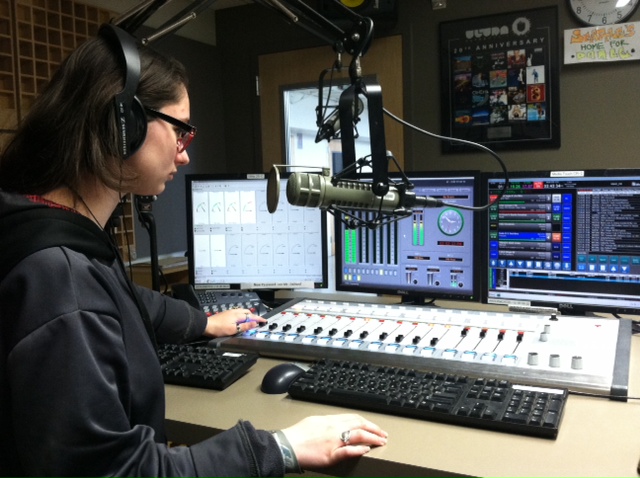
We have to wonder. How many of us in broadcasting could pass Mr. Thwait’s class and ace the final exam – a very familiar exam at that! Mr. Thwait teaches a high school class on electronic media that prepares students to work at Nathan Hale High School’s station, KNHC-FM, C89.5. His final exam is none other than the FCC’s Third Class Radiotelephone Operator’s License exam that was once standard issue in the Broadcast School of Hard Knocks, although he’s modified it to reflect current rules and technology.
It’s good to know that schools like this still exist. Nathan Hale High School, located in Seattle, is one of the few remaining schools to operate a radio station as a direct pipeline to the next generation of broadcast talent. “Back in the 70s, there were dozens of stations in high schools but, over time, they were shut down, sold, or turned over to professional non-commercial operators. Once automation systems were commonplace, entry-level board-op shifts were eliminated at most stations, and that’s where most of us cut our teeth in broadcasting,” says H. June Fox, who spent more than 30 years in the industry and recently took over as the General Manager for KNHC-FM.
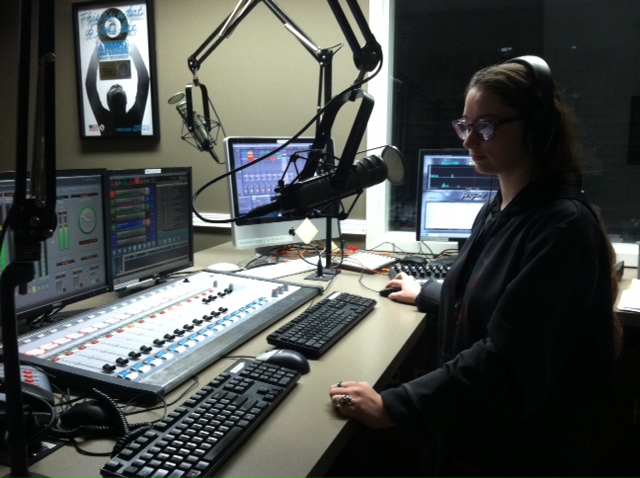
KNHC-FM programs a dance format with nearly a dozen full-time staff and more than 70 students. The station has been playing the dance music of the times for 45 years, more recently airing electronic dance music from the southern tip of Canada to Tacoma. In fact, KNHC-FM’s PM drive consistently gets a 1 share in the Seattle market, where there are 49 stations total, and six other non-commercials running traditional NPR programming.
“We are actually one of eight stations in the country – the only non-commercial station – that make up the Billboard dance chart,” says Fox. “We have a reputation for picking and playing hits long before they are on the commercial stations’ radar screens.”
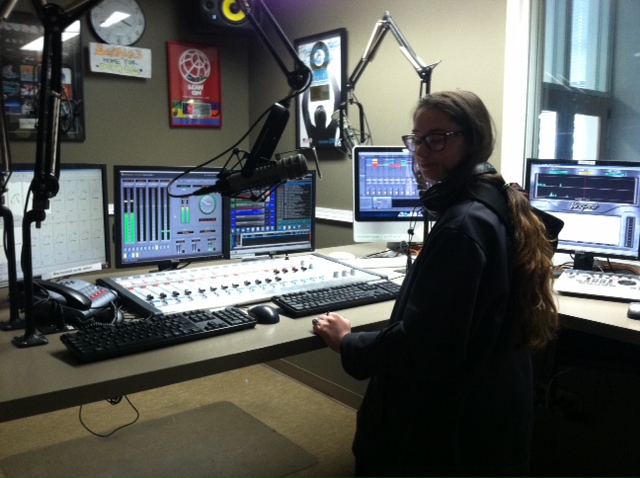
Brad Harrison, our sales engineer, decided to stop in at Nathan Hale High School while attending an SBE meeting in Seattle. What got him out to a high school on a Tuesday afternoon? He wanted to know more about this high school station that uses our top-of-the-line system, our WheatNet-IP audio networking with our E-6 control surfaces. “The facility is nicer than many commercial radio stations I’ve visited,” he says.
About Mr. Thwait’s final exam: We’re fairly confident we could pass the IP audio network portion of the test.

Wheatstone
-
Electronica Infinita (Laredo, TX) purchased I/O BLADEs and a GP panel plus other accessories for a WheatNet-IP audio network.
-
KSJV-FM (Fresno, CA) purchased an IP-12 digital audio console and NAVIGATOR software through BSW.
-
Mohawk College (Hamilton, ON) upgraded to NAVIGATOR 3 software for an existing WheatNet-IP audio network.
-
CBC (Regina, SK) purchased an E-6 and an L-8 control surface, and WheatNet-IP network BLADEs through Marketing Marc Vallee.
-
CBC (Edmonton, AB) purchased an E-6 and an L-8 control surface, and WheatNet-IP network BLADEs through Marketing Marc Vallee.
-
Corus Radio (Cornwall, ON) purchased the MTR-64 metering application for an existing WheatNet-IP audio network through Ron Paley Broadcast.
-
CBC (Montreal, QC) purchased additional I/O BLADEs and GP panels for an existing WheatNet-IP audio network through Marketing Marc Vallee.
-
Loyalist College (Belleville, ON) purchased an IP-12 digital audio console and GP panels through Ron Paley Broadcast.
-
Washington State University (Pullman, WA) purchased a WheatNet-IP audio network Scheduler program.
-
CBS’ KFRG-FM (Colton, CA) purchased a WheatNet-IP audio network BLADE and NAVIGATOR software.
-
WRTI-FM (Philadelphia, PA) purchased an L-12 control surface and two M2 dual channel mic processors.
-
WCCB-TV (Charlotte, NC) purchased a Dimension Three Touchscreen audio console.
-
Soundfusion (Johannesburg, South Africa) purchased five IP-12 digital audio consoles for community radio projects.
-
KCRA-TV (Sacramento, CA) purchased a Dimension Three Touchscreen audio console.
-
WXIR-TV/FM (Rochester, NY) purchased an IP-12 digital audio console.
-
Radio Midday (Mumbai, India) purchased two IP-12 digital audio consoles through Horizon Electronics.
-
Entertainment Network (Mumbai, India) purchased two IP-16 digital audio consoles and six IP-12 digital audio consoles through Horizon
-
Broadcast LLP.
-
KXLY-AM (Spokane, WA) purchased four IP-16 digital audio consoles, eleven TS-4 talent stations, nine WheatNet-IP audio network BLADEs, and
-
four M4IP dual channel mic processor BLADEs through BSW.
-
Leighton Broadcasting (Grand Forks, ND) purchased four TS-4 talent stations for an existing WheatNet-IP audio network.
-
CHIN-FM (Toronto, ON) purchased an LX-24 control surface through Ron Paley Broadcast.
Audioarts Engineering
-
University of Central Florida (Orlando, FL) purchased seven Air-1 consoles through SBCS.
-
Broadcast World Philippines (Manila) purchased an Air-4 and Air-5 console.
-
ZHC Digital Equipment Co., LTD (Hangzhou, China) purchased an Air-4 console for a community radio development project in Nigeria.
Wheatstone Audio Processing
-
Rogers Communications (Toronto, ON) purchased an M4IP-USB four channel mic processor BLADE through Marketing Marc Vallee.
-
Emmis (Austin, TX) purchased five M4IP-USB four channel mic processor BLADEs.
-
Audio Solution (Taipei, Taiwan) purchased a VP8-IP multimode audio processor.
-
Recording Media & Equipment (Fort Lauderdale, FL) purchased an FM-25 audio processor.
-
Oakwood (Mississauga, ON) purchased an R-55e console.
VoxPro
-
Oakwood (Mississauga, ON) purchased a VoxPro surface
-
Liberman Broadcasting (Houston, TX) purchased two VoxPro 5 upgrades.
-
Niagra College (Welland, ON) purchased a VoxPro 5 through Ron Paley Broadcast.
-
iHeartMedia (Tulsa, OK) purchased two VoxPro5 upgrades.
Seacrest Studios Open with VoxPro
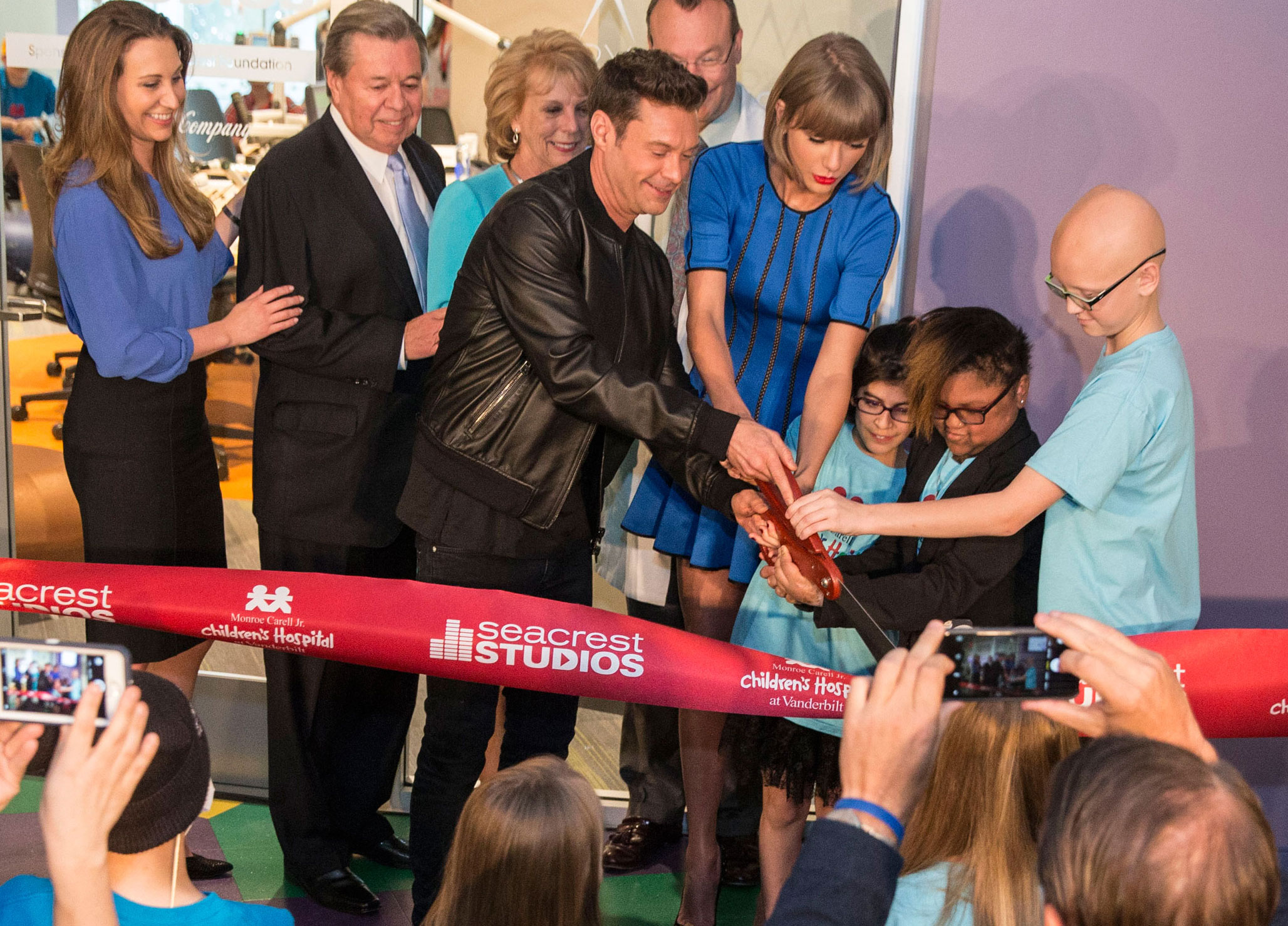
When Wheatstone acquired the VoxPro digital recorder/editor line a few months ago, one of the things that came with it was a commitment to donate a VoxPro unit to the new Seacrest Studios at Vanderbilt Children’s in Nashville and other hospitals around the country.
We gladly honored that commitment, as you'll see from these photos of the grand opening to the new studio on March 18.
Vanderbilt Children’s is just one of the studios opened by the Ryan Seacrest Foundation to help young patients explore the creative realms of radio, television and new media during a visit to or stay in the hospital. (Did we mention that Taylor Swift popped in for a visit during the grand opening?)
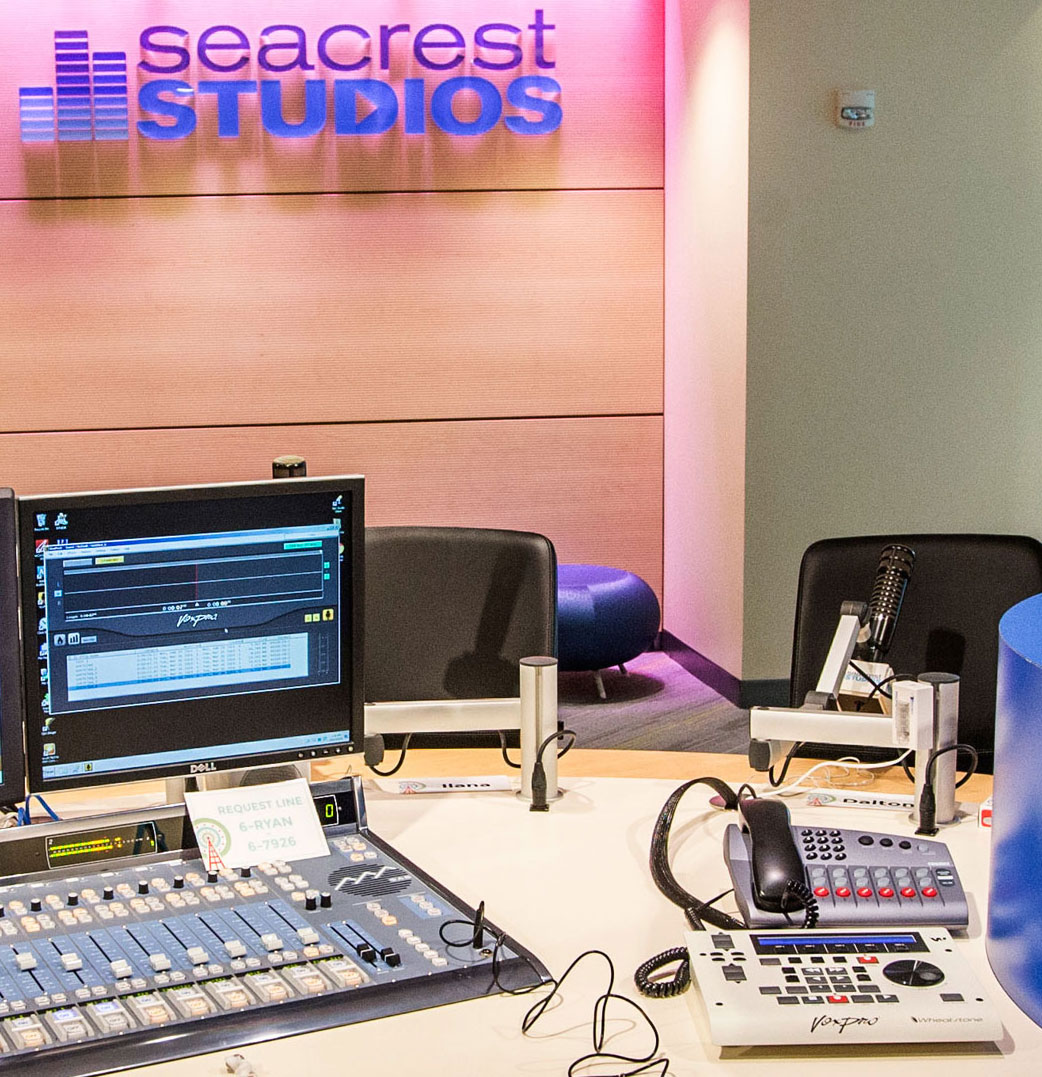
Ryan Seacrest, along with his family, started his foundation in 2009, and so far has set up 10 studios in children’s hospitals, including Vanderbilt Children’s, with green screen, CCTV system, and, of course, VoxPro digital recorder/editor. The VoxPro was supplied along with other broadcast equipment through Broadcasters General Store. By the way, Seacrest, who is the morning host for KIIS-FM and the host of the radio program American Top 40, has experience using VoxPro.
Thank you, Ryan Seacrest, for this important studio and all the broadcast equipment suppliers and manufacturers who made this happen.
Bring on the NAB!

Once again, we’ll be networking to the nines this NAB with our WheatNet-IP audio network and consoles, talent stations, and other elements. You’ll see some new (check out our LXE customizable console), some interesting (you won’t believe what we’re doing with our BLADEs) and some extraordinary (we’re networking AES67 all over the place). It’s all happening at booth N2530 and we look forward to seeing all our friends at NAB this year!
You’ll also see some Wheat on the floor elsewhere, including the BSW, Tieline, OMT, NETI, and ENCO booths.
We are updating our special NAB page.
Click here to go there!
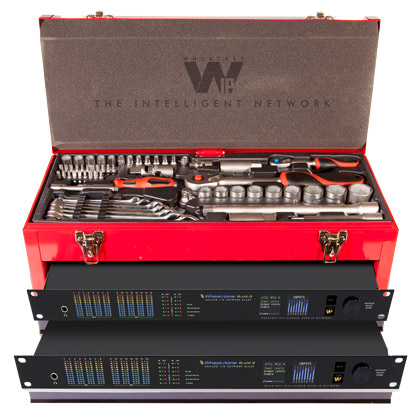
Your Question Answered
Q: How is the IP audio console different than other consoles?
A: For starters, all I/O is managed in the network so that the console itself is not limited to a certain number of fixed connection points. This makes it possible for any channel to connect to any audio source in the studio, and to move audio around without the use of soundcards. All sources in the network are accessible, and every destination visible from the console. Plus, changes are a lot easier to make as a result. You can instantly change mic feeds, IFB connections and processing settings – and pick them up anywhere in the network. For example, you can bring up a mic feed and the processing settings for that mic in Studio A same as in Studio B. It’s all based on native IP, so the console can talk IP directly to your production automation system. No serial data conversions needed.


